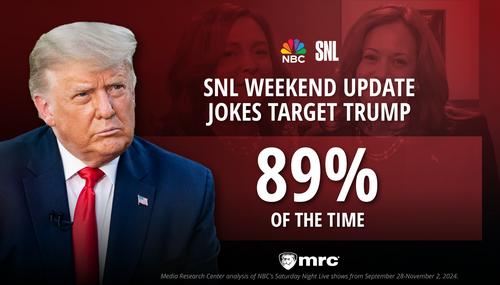 Add Toy Story 4 to the list of ridiculous things called racist. In a January 3 op-ed, The Hollywood Reporter managed to deem a movie about animated children’s playthings problematic.
Add Toy Story 4 to the list of ridiculous things called racist. In a January 3 op-ed, The Hollywood Reporter managed to deem a movie about animated children’s playthings problematic.
While offering effusive praise for Toy Story 4 being “exuberantly entertaining” and “creatively conceived,” in the end, author Stephen Galloway reported he was left with a “slightly bitter taste” and the “sense that something was naggingly wrong.”
His problem? He thought TS4 offered “an Eisenhower-era fantasy, a vision of America that might have come from the most die-hard reactionary: lovely if you’re wealthy and white, but alarming if you’re black or brown or gay or a member of any other minority — in other words, more than half the U.S. population.” Talk about a Debbie Downer.
He resorted to bean-counting the number of people of color versus Caucasians playing animated toys, putting himself in the ridiculous position of complaining that Tony Hale’s new character, a plastic fork named Forky, is “a very white fork.” The horror.
To explain the supposed importance of representation, he quoted an African American animation director as saying, “When you don’t see yourself represented and you don’t see people with your same type of hair seen as the hero and seen as loving and desired, it really does a number on your self-confidence.”
But nobody “sees” themselves in a story about talking toys, unless they happen to be a T-rex, slinky, or Mr. Potato Head. Woody’s hair is plastic, who feels represented by that?
And it’s not just “the near-absence of people of color” that THR finds “bothersome.” The writer for the rich and powerful entertainment industry decries “the absence of anything approximating life in America as most of us know it.”
As Galloway explained it,
TS4’s main family lives in a big, brightly lit house in an ivory utopia; its daughter sleeps in a plush room packed with a U.S. Treasury’s worth of gizmos; they drive around in a gas-guzzling RV, stopping for carnivals and carnies that would be right at home in the 1940s or 1950s. Problems of prejudice, money and unemployment never seem to cross anyone’s mind.
Funny how socio-economic problems don’t come up in a lighthearted kids’ movie!
He somehow compared this cute vision of suburbia to the real-life horrors of Levittown “where a black family’s arrival in 1957 led to waves of violence.” Because, more than being “unconnected to reality; it conveys the idea this is what reality should be.” Again, this is a G-rated kids’ movie!
Bemoaning that “animation has long been a white, male preserve,” Galloway claimed, “Pixar has often repeated outmoded tropes with no visible awareness of doing so,” citing the “foreign stereotypes” seen in the movie Cars as “inadvertently encouraging the anti-immigrant prejudice that’s now running rampant through the country.” He also blamed past Pixar head John Lasseter for promoting a “rearguard view of an idealized past that was only ideal if you weren’t black or Hispanic or poor.”
Then Galloway engaged in the worst kind of appeal to authority fallacy. He thinks he’s some kind of expert on race relations as a white middle-class man because – get this – he KNOWS someone who adopted an African American child!
If you’re white and middle-class, as I am, if you drive a nice car and have a safe job, all this may seem moot. But not if you’re the five-year-old, African American girl a friend of mine recently adopted. I was about to give her Toy Story 4 but I’ve changed my mind. Because it sends the worst sort of message for a child like her: you’re an outsider, kept at a distance from everything fuzzy and fun in American life.
To conclude, he hopes that by Toy Story 5, “we’ll have reached the end of this make-believe homogeneity, this racism-by-exclusion that’s no less pernicious than the real thing.”
Only someone who thinks a plastic fork is a tool of white supremacy would think “racism-by-exclusion” is just as bad as real racism.





